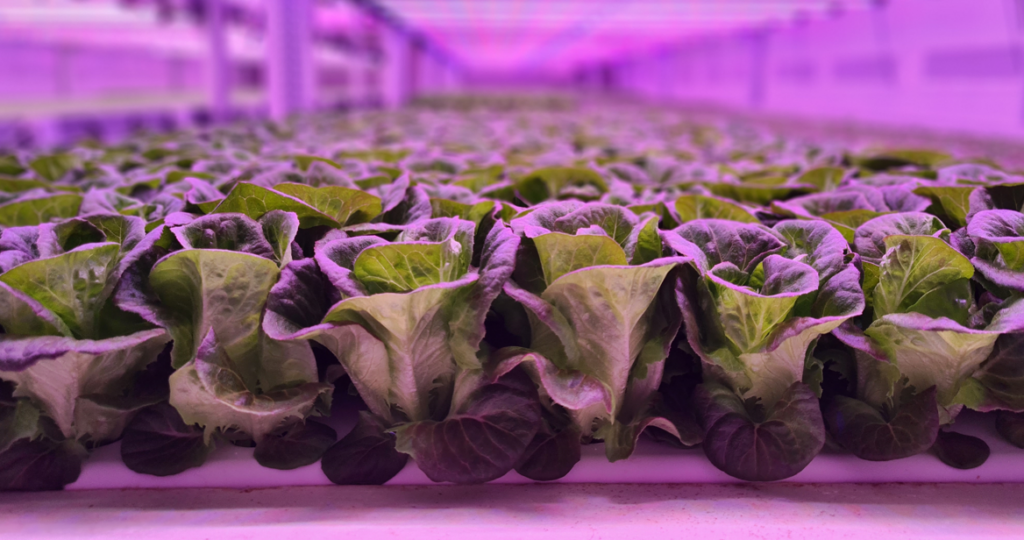In the second of a series exploring the technology of vertical farming, Alex Martin from Dextra and Alessandro Oliveri of igrox SRL look at the influence of wavelength and LED efficiency.
Put simply vertical farming is regular indoor farming but instead of spreading out the growing areas across one plane the growing areas are spread up on multiple planes. This requires a lot less ground space and the increased density is a much more efficient use of indoor space. But it is not right for every plant species and can incur other difficulties.
One example of a hurdle to overcome is managing the thermals produced by such densely packed lighting. The only way to overcome this is by cooling the environment sometimes at great cost. One of the reasons why it is so important to use high quality efficient lighting. Generally speaking, the more efficient the LED lighting is, the less heat output it will produce per Watt of electricity consumed.
In the realm of vertical farming, where every square inch counts, maximising efficiency is paramount. One critical aspect that significantly impacts efficiency is the selection of the light spectrum. The spectrum of light utilised in vertical farming not only influences plant growth but also affects energy consumption, yield, and overall sustainability.
Choosing the right spectrum tailored to specific crops’ needs is essential for optimising photosynthesis and promoting healthy plant development. Different wavelengths of light have varying effects on plant physiology, influencing factors such as flowering, nutrient absorption, and overall biomass production. Moreover, spectrum selection directly impacts energy efficiency. By harnessing the precise wavelengths of light required for optimal growth, vertical farms can minimise energy waste and reduce operational costs associated with lighting systems.
The spectrum’s importance extends beyond mere growth stimulation; it also influences the nutritional quality and taste of harvested crops. Fine-tuning the light spectrum can enhance nutrient content, flavour profiles, and even shelf life, offering consumers fresh and high-quality produce.
Innovations in LED lighting technology allow vertical farmers to customise light spectrums with unprecedented precision, targeting specific plant growth stages. By harnessing these advancements, vertical farms can achieve higher yields, lower resource consumption, and greater sustainability.
In our experience there are no right or wrong light recipes in absolute terms, lighting systems and spectrum selection must be studied and optimised together with all the other technologies and strategies inside the farm.
For example, density of plants in the cultivated area and duration of the growing cycle has an impact on the spectrum optimisation, high density and long growing cycles require a different light spectrum than lower densities or shorter cycles.
With regards to energy consumption, thanks to the latest development in LED lighting technology and the manufacturers working side by side with farmers and growing facilities, high quality lighting systems offer huge advantages over lower quality budget options. To put that in numerical terms, the highest quality LED horticulture lighting manufacturers can help vertical farms produce up to 227g of fresh salads per kWh of energy used for lighting. This represents a great step forward in terms of sustainability and over double what a non-tailored spectrum or budget LED horticulture lighting product could offer.
By understanding and harnessing the importance of the correct light spectrum selection and by working with premium LED lighting manufacturers that use the latest technology in an ethical and sustainable manner, vertical farmers can unlock the full potential of their operations, cultivating healthy crops while simultaneously advancing the future of sustainable agriculture.



